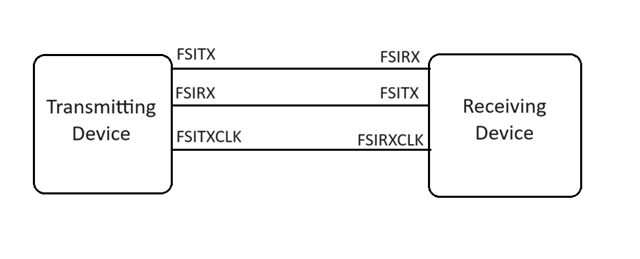Other Parts Discussed in Thread: C2000WARE
- I am using the C2000Ware example fsi_ex8_ext_p2pconnection_rx/tx to send some data from one controller (master) to second controller (slave). In the application, master always sends data and slave always receive data from master. Slave does not send any data back to master. Is it required to use the handshake part in the code? Can I send data without doing handshake? Does it require to connect slave device TXCLK pin to master device RXCLK pin?


